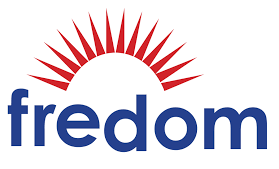Nutritional transparency and legal compliance: Keys to effective food labeling
Food packaging labels are one of the key elements of packaging information; they are among the most preferred by manufacturers to convey information. They provide relevant information, thus explaining customers’ decisions needed when purchasing these products. While a label acts as an attractive tool that makes people want to pick a product, it also helps give information regarding the components, their nutritional value, if it has any allergens, and how the product must be used. Label in food packaging serve important purposes in guaranteeing that a product meets the legal requirements and in enhancing consumers’ confidence in the product, in addition to promoting the health of the public. Proper product labeling helps consumers to build confidence in the quality and genuineness of the products purchased, which enhances the whole shopping experience as well as guarantees the consumer that the products they purchase will always be of good quality.
1. Custom food label makers
Custom food label maker has a unique role in determining labels that meet specific food product requirements. These specialists focus their talents on the creation of labels that suit branding goals and meet legal requirements. It makes them guarantees that the food products can find their unique niche and attract the ultimate customer’s attention in particular segments. Custom food label maker relies on sophisticated equipment to create attractive labels that are symbolic of the brand of the product that they are producing. They also include enhancements such as textured appearance, hologram aspects, or even smart labels for customer feedback. Also, they offer the possibility of varying designs for particular limited editions or, for instance, seasonal offers on the packaging so that it would stay interesting and attract clients.
2. Nutritional information on the labels
Label information is one of the most important informational components of food packaging. In this respect, the consumer acquires information about the energy value of the product including macronutrients and micronutrients to make a proper nutritional choice given certain health goals. To the people managing certain health concerns like diabetes and hypertension, there are no words to pen down given the importance of accurate labelling of nutritional information. With clear, concise, and standardized information, consumers know what to choose. It includes the serving size, daily value percentages and added sugars so you know what health issues a product might have. Additionally, transparent nutritional data is a way to build trust because it lets people know that brand cares about consumer’s wellbeing and the decision to buy.
3. Food labels and legal compliance
Manufacturers need to adhere to legal requirements in food labelling to preserve credibility and avoid penalties. There are also some authorities in different areas which demand that some information like ingredients, allergens, date of expiry and storage directions should be declared to ensure that consumers are safe. Inability to comply may lead to serious penalties which may include product recalls, fines or even a loss of business brand image. Advanced technology including food labels helps to protect consumers from deception by ensuring transparency and accuracy. Another aspect of legal compliance is the appropriate use of approved terminology, standardized formats, and clear disclosures of potential risks. Not only is it important to stay compliant to avoid regulatory problems, but it also gives your brand credibility and builds consumer confidence that the brand is ethical and reliable.
4. Sticker printing technology and its impact
Sticker printing technology has revolutionized the way labels for food are produced and it has brought more innovative ideas to help improve packaging aesthetics and functionalities. Modern techniques allow us to produce vivid, long-lasting, and economical labels to attract notice and convey important details. With so many types of custom stickers available, advanced printing methods like digital and offset printing are utilized to make them in all shapes, sizes, and finishes to suit a wide range of requirements. Other options include biodegradable materials and sustainable inks that cater to those interested in environmental conservation. Furthermore, the precision and efficiency of modern sticker printing cut down unneeded waste and production expenses. These advancements enable businesses to acquire top-quality labels that strike a balance between visual appeal and stubbornness.
5. Branding through labels
Labels can be a very powerful way of branding with labels as visual representations of the product and value. The brand’s story, ethos, and promise to consumers are all encapsulated into a well-crafted label, which is why it is so critical to marketing strategies. The use of colours, fonts and imagery can communicate emotions, make an impression and differentiate products in crowded markets through the strategic use of labels. Branding from label to label is consistent which increases brand recognition and builds loyalty, thus strengthening the consumer–product relationship. Including creative elements, such as tag lines, unique designs or cultural references, could make them more appealing. Labels can lead to effective branding that determines purchase decisions and creates a strong market presence that induces repeat patronage.
6. Driving consumer engagement with custom labels
It allows manufacturers to build connections with their target audiences better by introducing unique features that amp up the interaction. Labels can be transformed into interactive tools through unique elements like QR codes, augmented reality experiences and personalized messages in an engaging journey for consumers. Special promotions, seasonal themes, or limited-edition designs inspire returning for some sense of exclusivity and excitement around repeat purchases. Custom labels, assist brands in maintaining their relevance and relatability by addressing specific consumer preferences or trends. Additionally, these labels can be used to convey social or environmental causes, giving buyers an emotional connection with the purchase that goes beyond the product itself, building loyalty and driving brand advocacy.
7. Food labelling for the future
The trend of sustainability is gradually gaining importance in the food industry and food labels are the key to it. Companies are now using sticker materials that are biodegradable and recyclable as they can minimize the company’s imprint in the environment, especially with the rising concern with quality and design. Sustainable labeling also calls for non-hazardous dyes that are derived from plants as well as new techniques that reduce wastage. Adding environmentally friendly practices onto labels assists brands to come across environmentally conscious clients in addition to required planetary sustainability. Labels that focus on ethical sourcing, low carbon footprint or reusable packaging help form the green future and consumers are focusing on sustainable business practices.
In conclusion, food labels are an indispensable part of modern packaging, particularly as a necessary bridge between manufacturers and consumers. They help provide critical information—transparency, legal compliance and consumer safety—but also contribute to the visual appeal of the product. Custom food label makers have the expertise to not just make the packaging stand out, but also align with branding to regulatory requirements, providing innovative solutions catered to the diverse needs of the market. Labelling information provides consumers with the tools to make dietary choices and ensures that labelling laws are complied with while enhancing trust in labelling and protecting public health. Advances in the technology of sticker printing and sustainability initiatives show that labels have the potential to evolve to stay aesthetically, functionally and ethically relevant.

